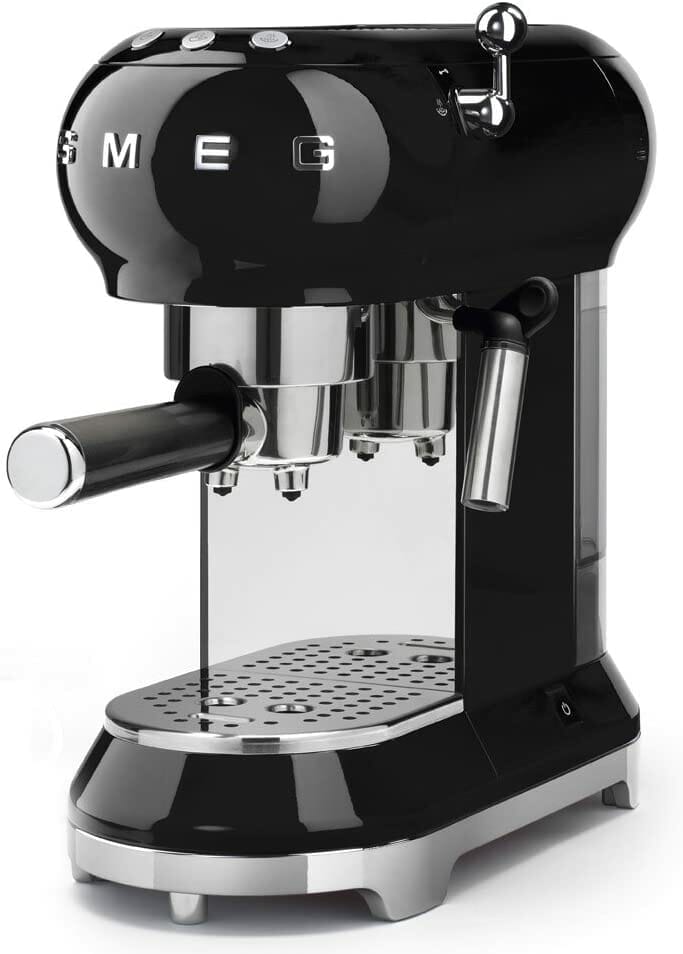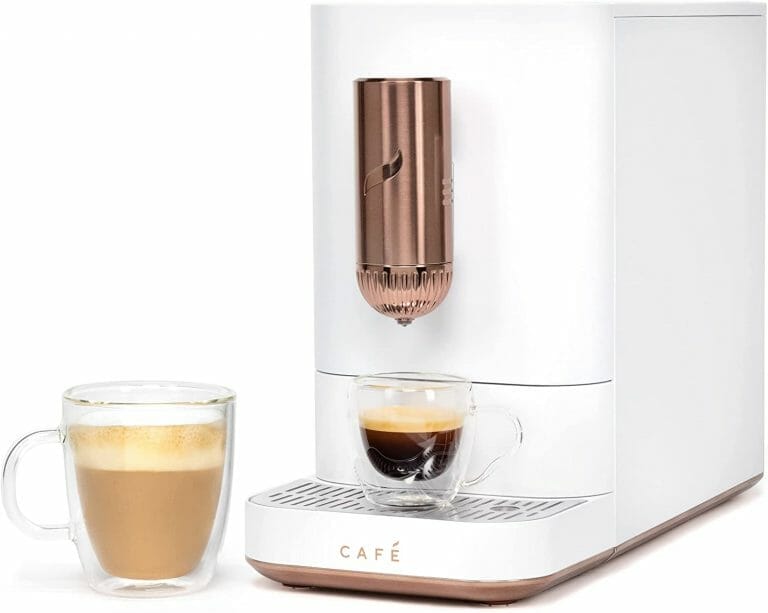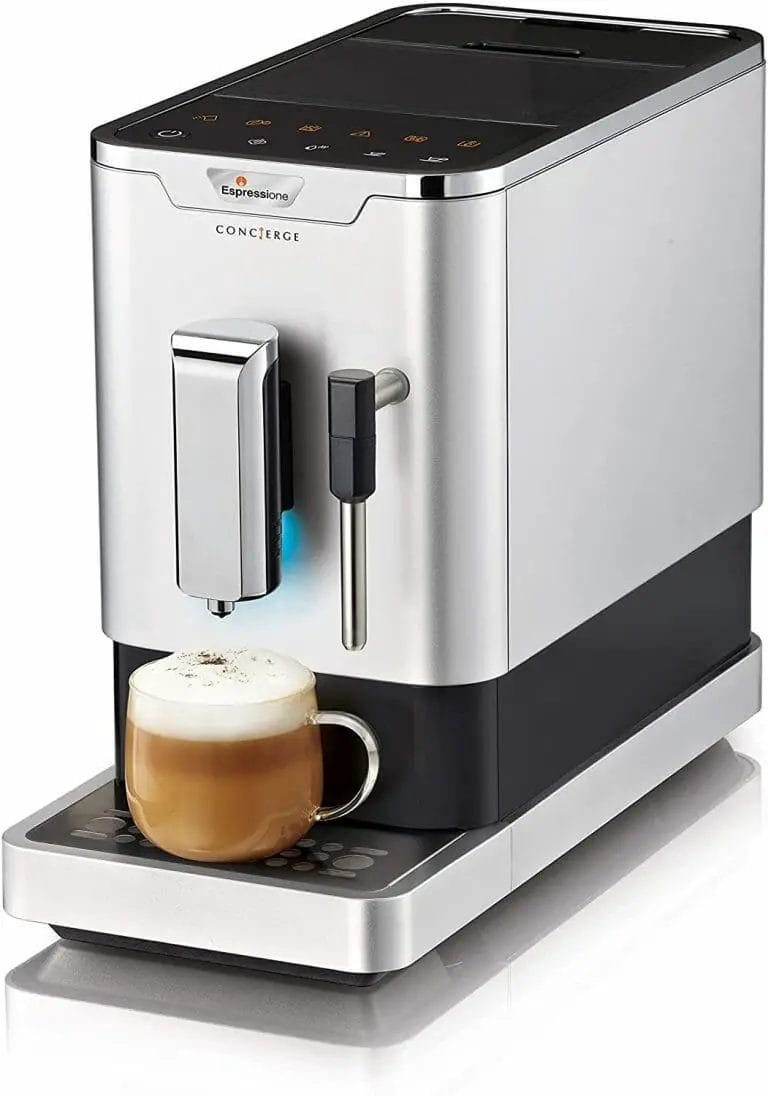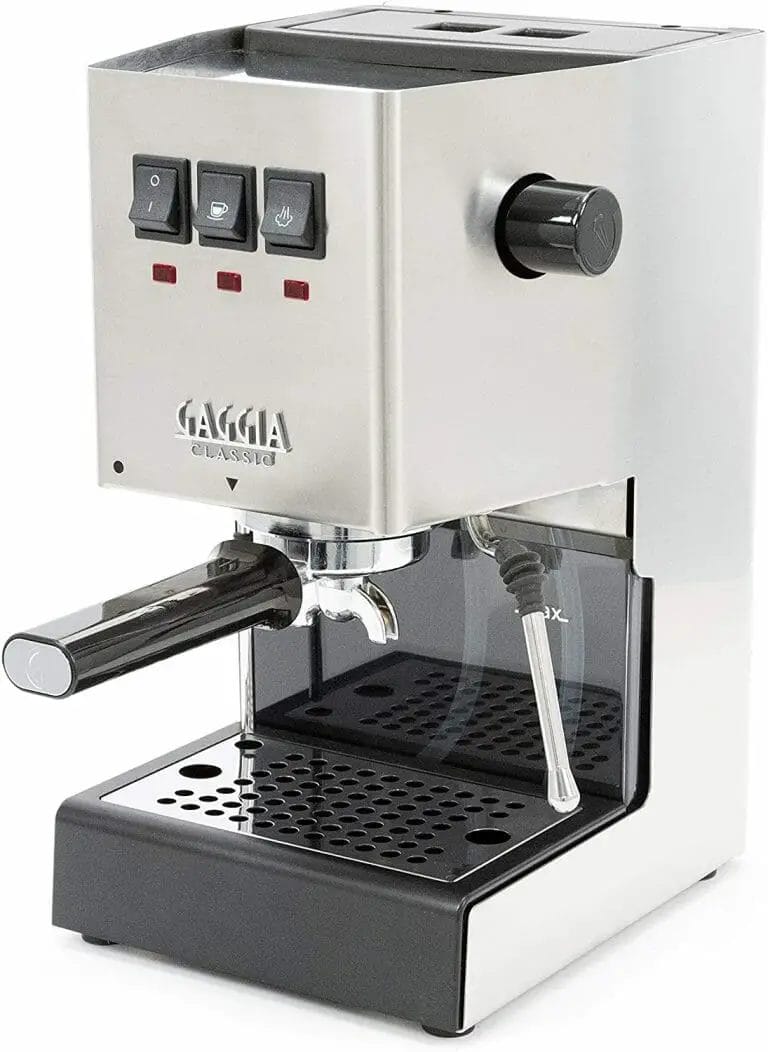How To Make A Cappuccino With An Espresso Machine
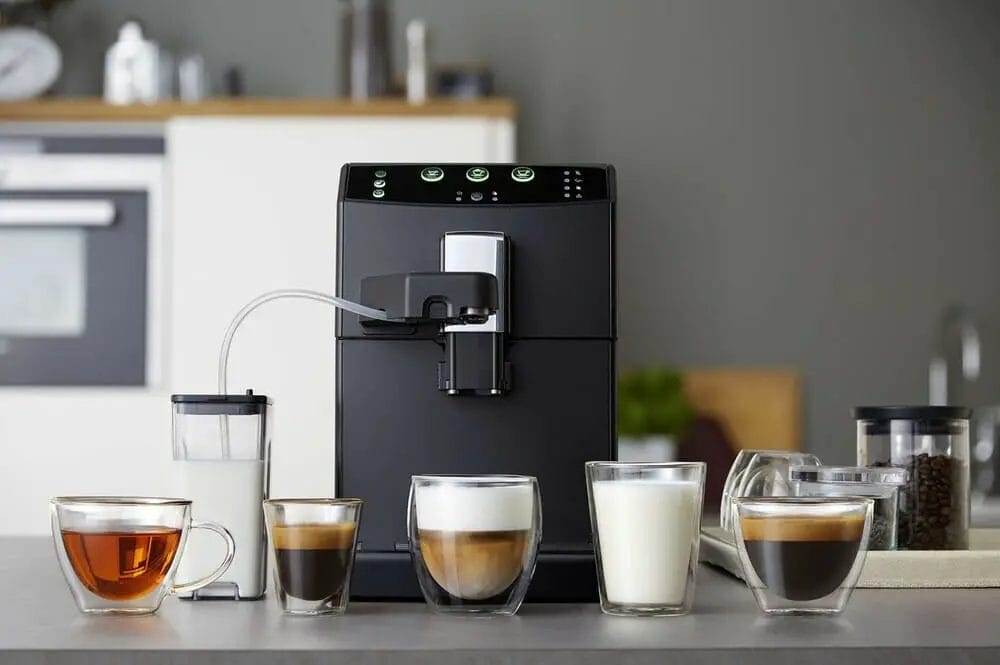
Now, who doesn’t love to have a cup of good cappuccino? But, you don’t want to visit the coffee shop all the time.
Or perhaps you have an espresso machine at home and are wondering how to make a cappuccino with it?
Yes, that’s right, an Espresso machine can make you a perfect cup of cappuccino. Now, you can create your cafe-quality cappuccino in the comfort of your home.
The tiny but mighty cup is one of the most acclaimed espresso beverages in all!
It starts with the perfect balance of steamed milk, espresso, and fluffy foam. In this article, I’ll show you how you can put together this vibrantly sweet beverage like a pro!
What is a Cappuccino, exactly?
A cappuccino is an Italian coffee drink prepared from espresso and hot foamed milk. The word “cappuccino” comes from the colour of the hat of the Capuchin friars who drank it while they were taking meals.
The signature quality of a good cappuccino is its dense froth.
What Makes a Good Cappuccino?

The critical aspect of this popular coffee-based drink is:
- 1/3 espresso
- 1/3 steamed milk
- 1/3 milk froth.
A well-made cappuccino has a perfect balance of flavors.
Espresso is famous for its distinct taste, and it has a creamy foam with a low acidity that adds to the richness of the flavor.
It is generally served in a warmed-over porcelain coffee mug. For take-out, coffee shops use paper cups with plastic tops.
Some people add flavoured syrups, for instance, vanilla, chocolate, caramel, cinnamon, and peppermint. Some people use chocolate or cinnamon in their milk foam. Other people just add sugar or sweetener.
Different Types of Cappuccino
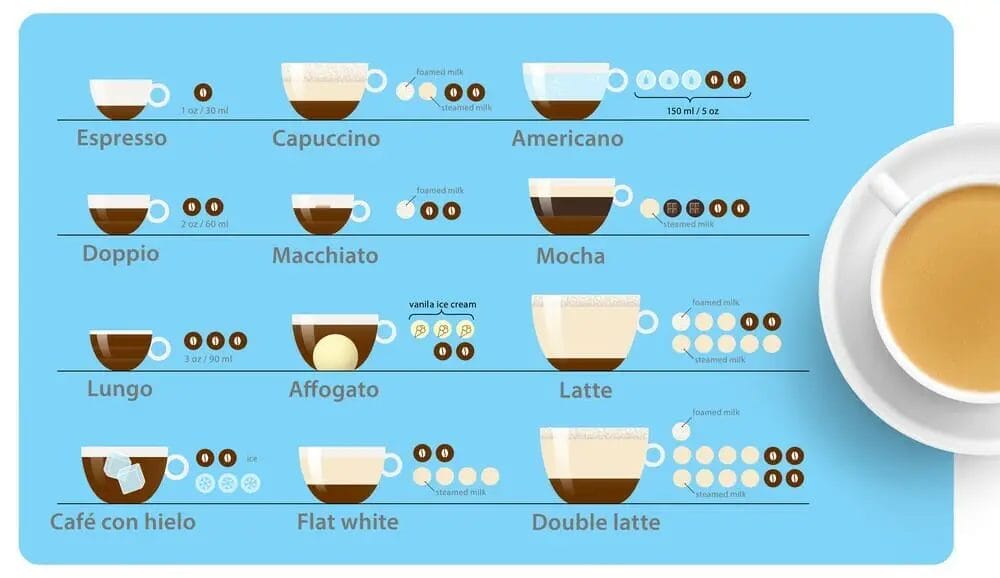
Here are the three types of Cappuccino:
1. Traditional Cappuccino
Cappuccino started in Italy around the 20th century, upon the invention of the coffee machine. Back then espresso machines were too big and complicated to have at home.
So, people could only drink espresso at a cafe or coffee house.
When Italians started adding milk to their espresso, they created new coffee beverages. Coffee with milk-based variants like cappuccinos and Lattes.
A traditional cappuccino has even amounts of espresso, steamed milk, and milk foam. Usually, every cup uses a double shot of espresso.
Then, an equal amount of milk and froth is poured. The milk froth acts as an insulator against the drink getting cooler.
2. Wet Cappuccino
This is also known as the Light Cappuccino (Clear Coffee).
A wet cappuccino is more creamy than a traditional one which has more milk than espresso and foam. This super-wet cappuccino is called “latte.” It’s just an infusion of espresso and steamed milk, with no milk foam or froth.
3. Dry Cappuccino

On the other side, a Dry Cappuccino is also called Dark Cappuccinos (Cappuccino Scuro).
A dry cappuccino has more milk foam and is darker because the steamed milk is less. The taste is also stronger than any traditional cappuccino.
A “bone-dry” cappuccino is a mixture of espresso and milk foam without steamed milk.
What is the best milk for use with a cappuccino?
It is something important that you should know:
- Buy milk as fresh as you can! Merely pouring milk that’s nearing its expiration date will result in a lack of foam.
- Whole milk is the best milk for cappuccinos. It makes the best froth because it has a higher fat content.
- You can use 2% milk. The results are less rich but reasonably acceptable.
- Oat milk is the best non-dairy milk to use for vegan cappuccinos. It also froths up the best and has excellent taste.
Things You Require to Make Cappuccino
Now that you know what a cappuccino is, it is the moment to learn how to make one.
Below are the cappuccino ingredients we need to make the perfect cappuccino.:
1. Espresso Machine
[amazon Box=”B007K9OIMU” ]
It creates the espresso, the base of cappuccino. Additionally, the steam wand of the espresso or milk machine defrosts and whips it.
Luigi Bezzerra invented the espresso machine in the early years of the twentieth century. He saw an opportunity as coffeehouses took very long-brewing a cup of coffee.
Thus, he introduced the espresso machine, making a cup of espresso coffee in a mere few seconds.
2. Steamed Milk
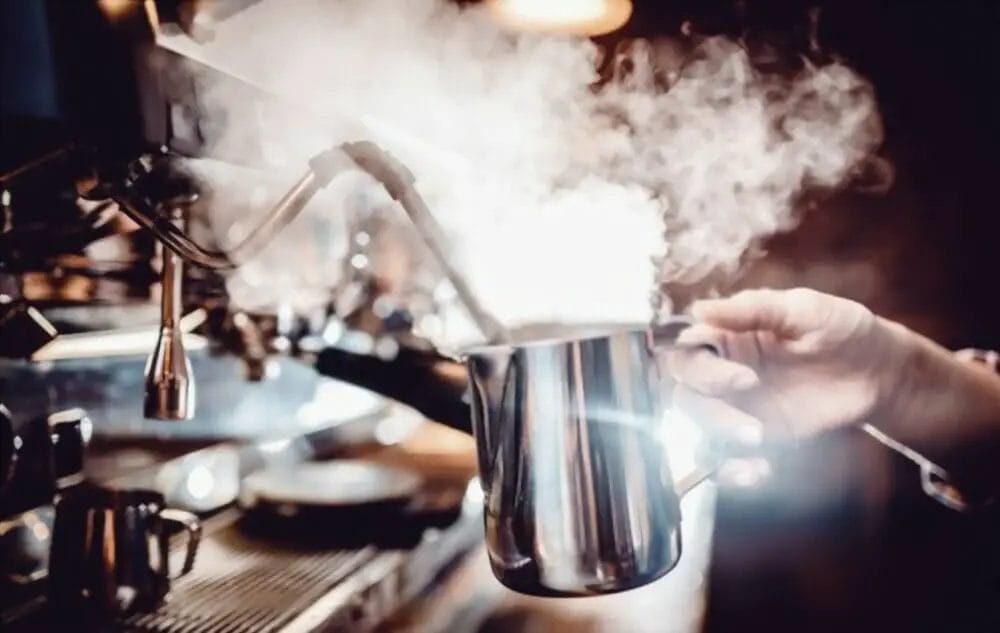
You can use milk with 2% fat when steaming. It’s the most common type of milk. You can also use fresh milk to get the foam of your cappuccino.
3. Foamed Milk

An espresso machine is necessary to create the milk foam. It has a steam wand that creates the milk foam. Frothing the milk would produce more creamy and more excellent foam.
For beginners, non-fat milk is the easiest to froth. The taste isn't as creamy as 2% milk, but it's a good option.
Whole milk produces a rich and excellent espresso, but it poses a challenge to making froth. It is due to the high fat content, which weighs down on the foam.
Soy milk is also an alternative for those who can not digest lactose. However, the foam of soy milk quickly disappears because the protein structure can’t hold bubbles. In addition, it tends to burn faster than whole milk.
Non-organic milk has an advantage over organic milk because it doesn’t have as much protein. However, the pasteurization process destroys the protein.
Therefore, it also does not support the bubbles of milk in the foam.
4. Milk Jug
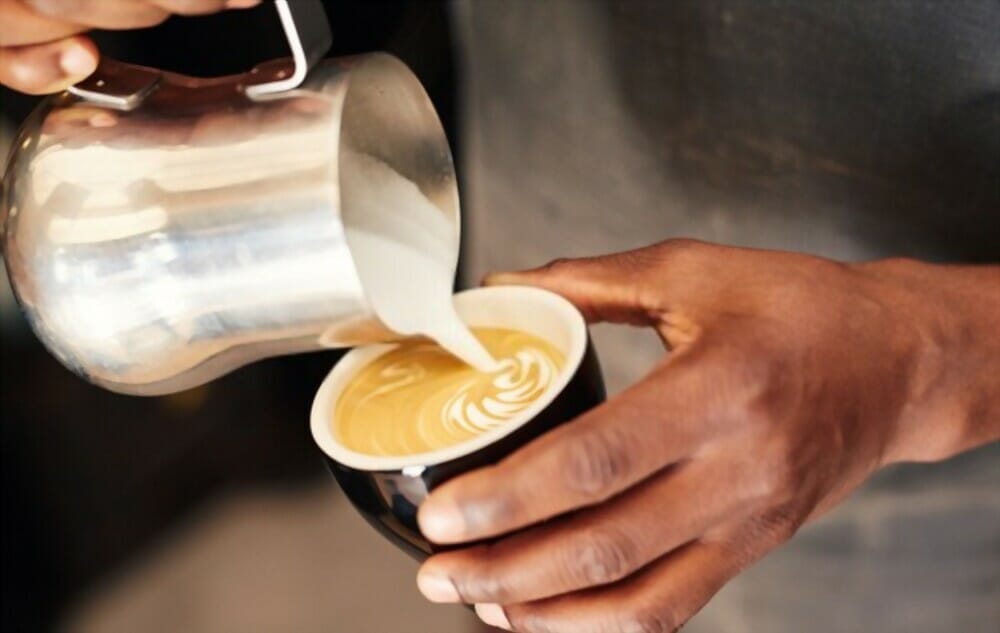
We suggest using a stainless steel jug with a spout and handle. This is where you will put the fresh milk for steaming and frothing.
5. Thermometer
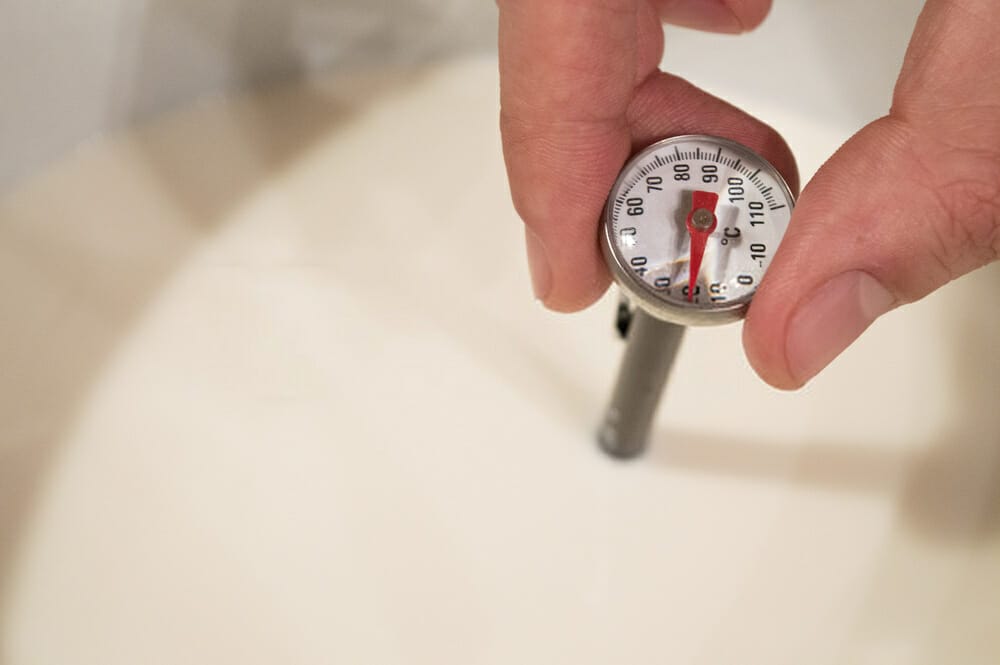
The ideal temperature for steaming and frothing milk is 150 to 155 degrees Fahrenheit. If you steam or froth the milk at a higher temperature, the bubbles don’t hold.
Others just bypass working with thermometers because they have a very trusting hand.
If it is lower than the body temperature, still lower than what it should be. In addition, if you can't even touch it for 5 seconds, the heat is too much.
Instructions

1. Make the espresso
[amazon Box=”B00CH9QWOU” ]
An espresso machine or manual espresso maker is used to make two shots of coffee. It’s most often poured in a mug, or you can try using an Aeropress Espresso.
2. Steam the milk (espresso machine)
Fill the pitcher with milk. Bring the steaming wand close to the surface of the milk and heat it until it doubles in size and is foamy.
Lower the steaming wand until the milk is at 150 degrees Fahrenheit. You can detect this by measuring with a thermometer or when your hand can’t hold the pitcher for more than a few seconds.
3. Heat the milk to scalding and foam it (without an espresso machine)
The best way to heat milk is to scald it. Scalding heats milk quickly without it boiling, which can happen if you use an espresso machine. Measure with a food thermometer, or test with your finger. Froth the milk until it is frothy.
A cappuccino comprises 1/3 espresso, 1/3 steamed milk, and 1/3 foam. You need a cup of milk for the French press to work with.
4. Swirl the Milk
Gently swirl the milk to release any large bubbles. After this, froth the milk until it is lightly
creamy.
5. Pour the milk
Pour the milk over the espresso from a height of two feet for a rich texture.
6. Serve

You can add a spoonful of sugar and some syrup if you wish.
Top Tip: Practice makes A Cappuccino perfectThings to Remember

- Use only fresh milk when you’re steaming. Buying milk that’s older than five days can result in a poor-tasting froth.
- Don’t reuse milk; mix new milk with already used milk or mix already steamed milk with ice. It will just contaminate the milk, as bacteria can thrive. Instead, put what you need in the steamer.
- Always place your milk back in the refrigerator after using it.
- Clean the milk jug after use.
- Always wipe and purge the steam wand before and after using.
- Overheating the milk will also result in poor-quality coffee.
- After steaming the milk, don’t just leave a hot steam wand in the milk jug, or you’ll end up with ill-tasting milk. Instead, use an empty mug to make it easier.
- Always begin with cold milk when steaming. The less time cold milk spends inside the steam wand; the more creamy the foam will be.
- When making the foam, be delicate. Don’t rush this step—it’s easy to burn the milk when you rush.
- Lightly pour milk over the espresso for a creamier taste.
What is the ratio of espresso to milk for a cappuccino?
It is not a one-to-one ratio. Instead, it is usually equal to 60:40.
How do you make a large cappuccino with an espresso machine?
You must use more milk than espresso.
What is the difference between a cappuccino and an espresso?
An espresso is a strong, rich coffee beverage that contains only one-third steamed milk and two-thirds hot water.
A cappuccino is made with fresh milk and whipped cream on top. A traditional cappuccino also contains a small amount of chocolate, or any other type of syrup, to sweeten the drink.
What kind of milk do you use for cappuccino?
For a rich and creamy texture, skimmed milk is the recommended choice.
How much milk do you put in 2 shots of espresso?
The ideal ratio is 60:40, although both the espresso and the milk have their own characteristic flavors.
How do you make a cappuccino for beginners?
You simply need to froth the milk and pour it into a glass of espresso.
Conclusion

It takes time to learn to make a cappuccino with an espresso machine. But Practice makes you perfect.
You can’t relish and appreciate the rich flavor of espresso without understanding its history. You need to know the different characteristics of milk to get the taste and appearance you want.
The key to making a perfect cup of cappuccino is understanding how to steam the milk, which creates a good foam.
Adding milk to espresso is a significant component of a cappuccino. So, keep in mind the rationale behind every Cup of Cappuccino.
If you have any related experiences with coffee, make sure to comment below. I would love to hear from you.

